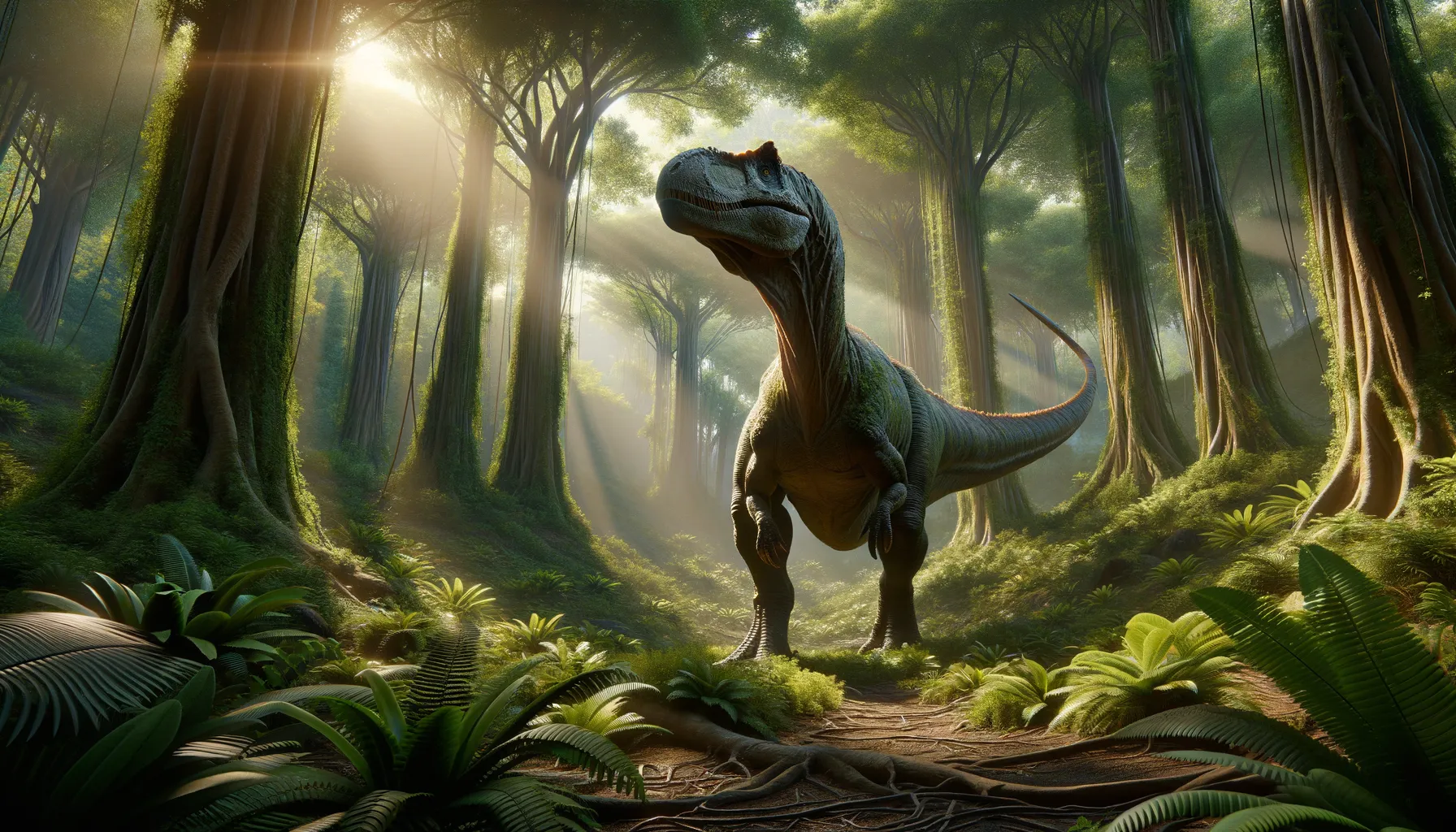
Tangvayosaurus
The gentle giant from ancient forests.
Period
Cretaceous
Length
About 15 meters in length.
Height
Approximately 4 meters tall.
Weight
Around 15 tons.
Tangvayosaurus was a large, plant-eating dinosaur that roamed the Earth during the early Cretaceous period. Its discovery in Laos has provided valuable insights into the distribution and diversity of sauropods in Asia. Notably, Tangvayosaurus shared its lush, forested habitat with other fascinating prehistoric creatures, contributing to a complex ecosystem. Its immense size and long neck made it well-suited for reaching high foliage, which was its primary source of food.
Diet
Tangvayosaurus was herbivorous, feeding mainly on the lush vegetation available in its habitat. Its long neck allowed it to reach leaves and branches that were high above the ground, ensuring it had access to plenty of food.
Hunting
As a herbivore, Tangvayosaurus did not hunt other animals. Instead, it spent much of its time foraging for food among the dense foliage. Its primary focus was on finding and consuming sufficient plant material to sustain its large size.
Environmental challenges
Tangvayosaurus faced environmental challenges such as varying plant availability due to climatic changes. It also needed to adapt to seasonal variations in food supply, which could affect its health and growth. Predators also posed a constant threat, requiring Tangvayosaurus to remain vigilant in its movements.
Speed
Relatively slow-moving.
Lifespan
Estimated to be several decades.
First discovery
Discovered in Laos in the late 1990s.
Fun Facts
- Tangvayosaurus was a gigantic dinosaur that lived during the Early Cretaceous period, around 125 million years ago.
- This dinosaur was a sauropod, which means it had a long neck and tail, resembling the famous Brontosaurus.
- Fossils of Tangvayosaurus have been discovered in Laos, making it one of the few dinosaurs known from Southeast Asia.
- The name 'Tangvayosaurus' is derived from the Tang Vay region in Laos where the fossils were first found.
- As a herbivore, Tangvayosaurus would have feasted on a diet of plants, using its long neck to reach leafy branches.
- Tangvayosaurus is believed to have been a social animal, potentially moving in herds for protection and social interaction.
- Despite its massive size, Tangvayosaurus likely had a relatively small brain compared to its body size, like many other sauropods.
Growth and Development
Tangvayosaurus likely experienced rapid growth in its early years, followed by a more gradual increase in size as it matured. This growth pattern would have helped it reach a size where it could better defend itself against predators. Like other sauropods, its development was closely tied to its ability to consume and digest vast amounts of plant material.
Habitat
Tangvayosaurus inhabited forested regions that provided ample food supply. These areas were rich in plant species, offering a diverse and nutritious diet for herbivorous dinosaurs. The environment also included rivers and streams, which provided essential water sources.
Interaction with other species
Tangvayosaurus coexisted with various other dinosaur species as well as smaller reptiles and mammals. It likely maintained a peaceful existence with other herbivores while keeping a wary eye on predatory theropods. Its massive size would have deterred many potential threats.
Natural lifespan
It could live up to 70 years under ideal conditions.
Reproduction
Tangvayosaurus probably reproduced by laying eggs, as evidenced by fossilized nests found in related species. The adults likely guarded the nesting site to protect the eggs from predators. Hatchlings would have had to grow quickly to improve their chances of survival.
Social behaviour
Tangvayosaurus may have lived in small herds, providing mutual protection and increased foraging efficiency. These social groups would have been essential for the survival of individuals, particularly during times of scarcity or environmental stress.
Fossil locations
Fossils of Tangvayosaurus have been primarily found in Laos, offering insights into Cretaceous ecosystems in Southeast Asia. These include partial skeletons, providing a glimpse into its anatomy and lifestyle. Such discoveries have been crucial in understanding the distribution of sauropods in ancient times.
